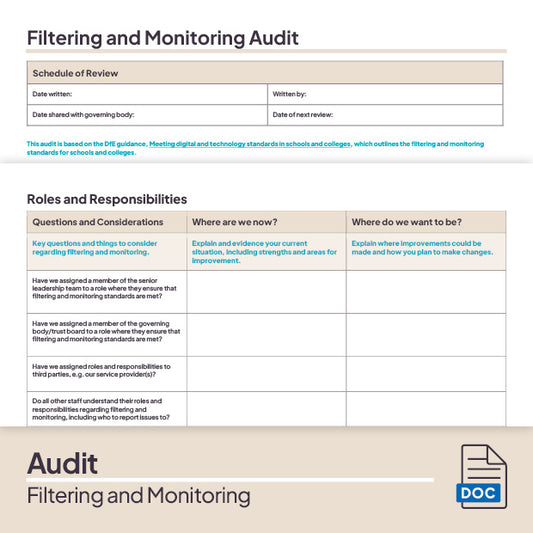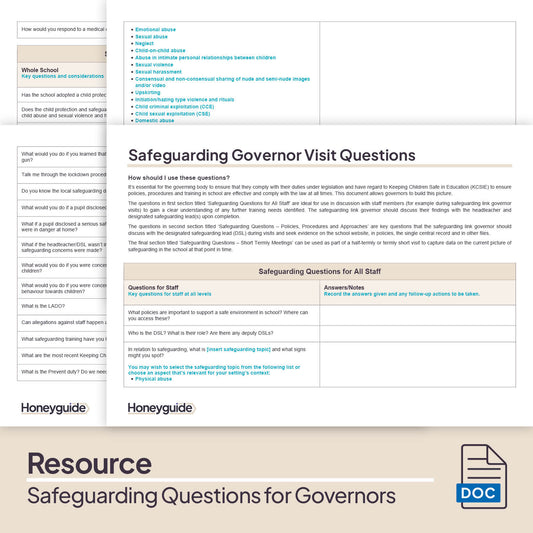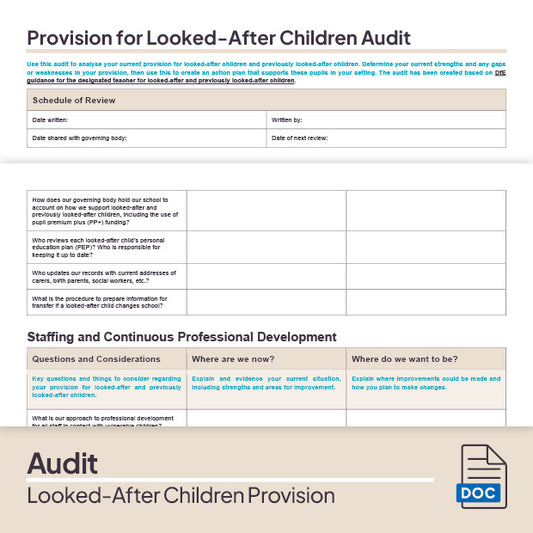Collection: Safeguarding Compliance
Streamline safeguarding compliance with Honeyguide. From keeping records up-to-date to implementing new KCSIE updates, we provide a comprehensive solution for DSLs and school leaders to maintain compliance and fortify safeguarding practices.
-
Safeguarding Audit
Regular price £17.50Regular priceUnit price / per -
Filtering and Monitoring Audit and Action Plan
Regular price £2.00Regular priceUnit price / per -
Safeguarding Questions for Governor Visits
Regular price £2.00Regular priceUnit price / per -
Looked-After Children Provision Audit and Action Plan
Regular price £2.50Regular priceUnit price / per -
Safeguarding and Child Protection Policy Checklist
Regular price £2.00Regular priceUnit price / per









